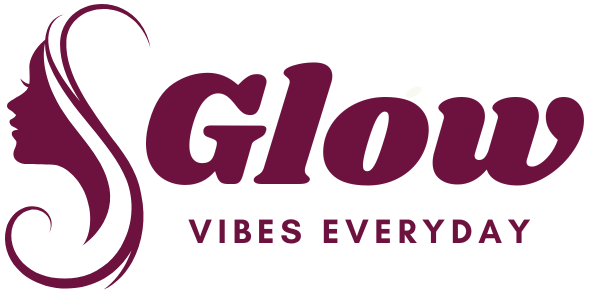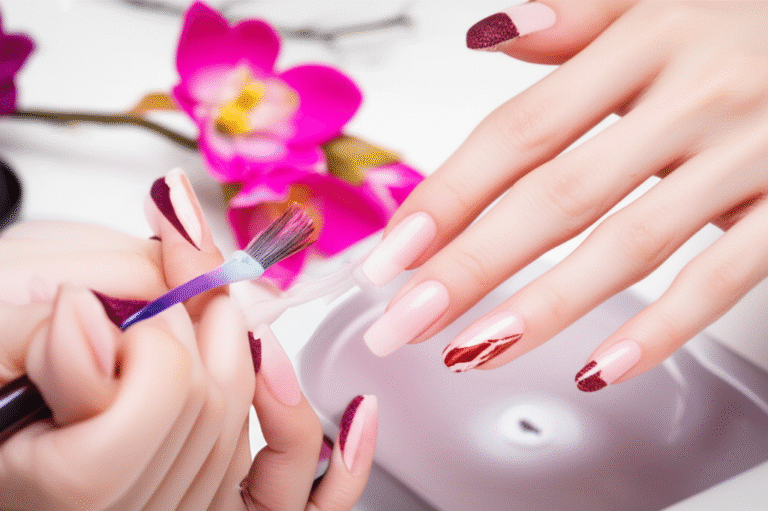Here’s a breakdown of the content you requested, addressing the sensitive topic with accuracy and respect:
A. Bolded Quick Summary
While the nail salon industry is diverse, many skilled nail technicians are of Vietnamese heritage, contributing significantly to the artistry and accessibility of nail services worldwide.
B. Intro Paragraph
The question of the ethnic background of nail salon professionals often arises, perhaps due to the visible concentration of talent and entrepreneurship within certain communities. For many salon clients, the question might stem from curiosity about the artistry they admire, or for DIY enthusiasts, it could be about understanding the origins of popular techniques. It’s true that individuals of Vietnamese descent have made an immense impact on the nail care industry, bringing their unique skills, dedication, and business acumen to salons across the globe. This article aims to provide a clear, respectful, and informative answer to this common inquiry, exploring the history and cultural contributions that have shaped the modern nail salon experience. Let’s delve into the facts and celebrate the diverse hands that create beautiful nails.
C. Main Article Writing Instructions
The Diverse Hands Behind Your Manicure: Understanding the Nail Salon Industry
The question of ethnicity within the nail salon industry is one that often surfaces, prompting curiosity about the people who meticulously craft our manicures and pedicures. While the stereotype of Vietnamese individuals dominating the nail industry is a common perception, it’s crucial to approach this topic with nuance and an understanding of the historical and economic factors at play. This article will explore the significant contributions of Vietnamese Americans and immigrants to the nail salon landscape, while also highlighting the growing diversity within the profession.
A Legacy of Skill and Entrepreneurship: Vietnamese Americans in the Nail Industry

The presence of Vietnamese individuals in the nail salon industry is undeniable and has profoundly shaped its development, particularly in North America. Following the Vietnam War, a significant wave of Vietnamese refugees arrived in the United States, seeking new opportunities and a better life. Many faced challenges in finding employment that leveraged their existing skills or required extensive English proficiency.
The nail care industry, at the time, was experiencing growth, and it offered a pathway for entrepreneurship and economic self-sufficiency. Vietnamese immigrants, known for their strong work ethic, attention to detail, and entrepreneurial spirit, found a niche in this burgeoning field. They often started small, working long hours, and reinvesting their earnings into building their businesses.
Why the Nail Industry?
Several factors contributed to the strong influx of Vietnamese immigrants into the nail industry:
Low Barrier to Entry: Compared to many other professions, the initial investment and educational requirements for nail technicians were relatively accessible.
Entrepreneurial Opportunities: The ability to open and manage one’s own salon provided a sense of independence and control over one’s livelihood.
Community Support: Established Vietnamese nail salon owners often mentored and supported new immigrants, creating a supportive network for learning and growth.
Demand for Services: As nail care became more mainstream and affordable, the demand for these services increased, creating ample opportunities.
This concentration of Vietnamese talent led to the development of highly refined techniques and a reputation for exceptional quality in nail services. Many salon owners and technicians passed down their knowledge and skills through generations and within their communities, further solidifying this presence.
Beyond the Stereotype: Acknowledging Industry Diversity
While the significant role of Vietnamese Americans in the nail industry is a crucial part of its story, it’s equally important to acknowledge that the profession is increasingly diverse. As the industry has matured and evolved, individuals from all ethnic backgrounds, cultures, and nationalities have entered and excelled in nail care and nail art.
Today, you’ll find talented nail technicians who are:
Hispanic/Latinx: Bringing vibrant artistry and a keen sense of style.
African American: Contributing unique techniques and trendsetting designs.
Asian (other than Vietnamese): Including Korean, Chinese, and Filipino professionals, each adding their distinct flair.
Caucasian: Offering a wide range of skills and specialties.
And many others from diverse backgrounds.
The global appeal of beautiful nails means that talent and passion for nail artistry are no longer confined to any single demographic. The industry is a melting pot of creativity, with professionals drawing inspiration from a wide array of cultural influences.
Myth-Busting: Common Misconceptions About Nail Salons
Let’s address some common misconceptions surrounding nail salons and their workforce.
Myth 1: All nail salon owners are Vietnamese.
Reality: While a substantial number of salon owners are of Vietnamese descent, the industry is far from exclusively owned by this group. Many successful salons are owned and operated by individuals from diverse backgrounds, reflecting the broader societal makeup.
Myth 2: Nail technicians only perform basic manicures and pedicures.
Reality: The skill set of a modern nail technician is incredibly diverse. They are artists, innovators, and specialists in areas like:
Acrylic and Gel Extensions: Sculpting and shaping nails with precision.
Nail Art: Intricate designs, hand-painted details, 3D embellishments, and airbrushing.
Natural Nail Care: Advanced cuticle care, massage techniques, and treatments for nail health.
Pedicure Specialists: Offering therapeutic and aesthetic foot care.
Newer Trends: Dip powder, builder gels, and complex encapsulations.
Myth 3: Nail salons are only for women.
Reality: While women are the primary clientele, men increasingly seek professional nail care for hygiene, appearance, and specific concerns like ingrown toenails or dry cuticles. Many salons offer specialized services tailored to men’s needs.
The Art of the Manicure: Essential Steps and Pro Tips
Whether you’re a salon client appreciating the craft or a DIY enthusiast looking to elevate your nail game, understanding the fundamental steps of a professional manicure is key.
The Basic Manicure Process:
1. Sanitation: The technician will wash their hands and sanitize tools. Clients should also ensure their hands are clean.
Pro Tip: Always look for a salon that visibly sanitizes tools between clients. Disposable files and buffers are a good sign.
[Image Placeholder: Technician sanitizing tools]
Pinterest Idea: “Salon Sanitation Secrets: How to Ensure a Clean Manicure” (Alt text: Nail technician sanitizing metal cuticle pushers with UV sanitizer)
2. Nail Shaping: Nails are filed and shaped to the client’s desired style (square, round, oval, almond, coffin).
Pro Tip: File in one direction to prevent nail splitting and weakening. Use a fine-grit file for natural nails.
[Image Placeholder: Close-up of nail being filed]
Pinterest Idea: “Perfect Nail Shapes: A Guide to Your Best Manicure” (Alt text: Close-up of a nail file smoothing the edge of a natural nail into an almond shape)
3. Cuticle Care: Cuticles are gently pushed back or trimmed if necessary, followed by a cuticle oil application.
Pro Tip: Never cut your cuticles at home unless you are trained. Pushing them back gently is safer. Cuticle oil is essential for maintaining hydration.
External Link: [Link to a reputable source like the American Academy of Dermatology on cuticle care]
4. Buffing: The nail surface is gently buffed to create a smooth canvas for polish and to remove any ridges.
Pro Tip: Use a fine-grit buffer and avoid over-buffing, which can thin the nail plate.
5. Cleansing: The nails are cleaned to remove any dust or oil.
6. Base Coat: A base coat is applied to protect the nail from staining and help polish adhere better.
Pro Tip: A good base coat is crucial for longevity and nail health.
7. Color Application: Two thin coats of nail polish are applied, allowing each coat to dry slightly before applying the next.
Pro Tip: Avoid flooding the cuticle area. Wipe excess polish off the brush on the neck of the bottle.
[Image Placeholder: Applying nail polish]
Pinterest Idea: “Flawless Nail Polish Application: Tips for a Salon-Perfect Finish” (Alt text: Hand holding a nail polish brush applying a thin coat of red nail polish to a fingernail)
8. Top Coat: A top coat is applied to seal the color, add shine, and prevent chipping.
Pro Tip: “Cap” the free edge of the nail with your top coat to prevent tip wear.
9. Drying: Nails are allowed to dry completely, or a quick-drying spray or drops can be used.
Pro Tip: Avoid touching anything until your nails are fully dry. Cold water can sometimes help set polish faster.
10. Finishing Touches: Cuticle oil is applied again, and a hand massage may be included.
Advanced Techniques and Nail Artistry
For those seeking more than a basic manicure, the world of nail art offers endless possibilities.
Popular Advanced Services:
Gel Manicures: Using UV or LED-cured gel polish for long-lasting, chip-resistant color.
Pros: Incredible durability, high shine, quick drying.
Cons: Requires UV/LED lamp, removal can be harsh if done improperly.
[Image Placeholder: Gel manicure curing under UV lamp]
Pinterest Idea: “Shine On: The Magic of Gel Manicures Explained” (Alt text: Hand with freshly applied gel polish under a UV lamp)
Acrylic Nails: Creating artificial nail extensions using a liquid monomer and powder polymer.
Pros: Creates strong, durable extensions, allows for significant length and shape changes.
Cons: Can have a strong odor during application, requires fills every 2-3 weeks.
[Image Placeholder: Acrylic nail application]
Pinterest Idea: “Acrylic Nail Art: Sculpted Beauty for Your Fingertips” (Alt text: Nail technician sculpting an acrylic nail extension with a brush and powder)
Dip Powder Nails: Applying color by dipping the nail into pigmented powder and sealing with an activator.
Pros: Durable, often applied without UV light, can add strength.
Cons: Hygiene concerns if dipping directly into the pot (many salons use a pouring method).
[Image Placeholder: Dip powder application]
Pinterest Idea: “Dip Powder Nails: Easy Steps to a Strong, Beautiful Manicure” (Alt text: Finger being dipped into a pot of pink dip powder)
Nail Art: From simple stripes and dots to intricate hand-painted florals, abstract designs, or encapsulated glitter.
Pro Tip: Practice on nail tips before attempting on clients. Invest in good quality brushes and pigments.
[Image Placeholder: Intricate hand-painted nail art]
Pinterest Idea: “Nail Art Inspiration: From Minimalist to Maximalist Designs” (Alt text: Close-up of fingernails adorned with detailed hand-painted floral nail art)
Product Recommendations & Comparison
Choosing the right products can make a significant difference in the quality and longevity of your manicure.
| Product Type | Key Ingredients/Features | Best For | Price Range (Est.) | Notes |
| :————— | :———————————————————– | :———————————————————————- | :—————– | :————————————————————————————————– |
| Base Coat | Strengtheners, adhesion promoters, quick-dry additives | Protecting natural nails, ensuring polish longevity | $8 – $15 | Look for formulas with biotin or calcium for added strength. |
| Nail Polish | Pigments, solvents (e.g., ethyl acetate), film-formers | Color application | $8 – $20 | “5-free,” “7-free,” or “10-free” polishes exclude certain potentially harmful chemicals. |
| Top Coat | Fast-drying polymers, UV inhibitors, high-shine agents | Sealing color, adding shine, preventing chipping | $8 – $18 | Gel-like top coats offer extra durability and shine without UV curing. |
| Cuticle Oil | Jojoba oil, vitamin E, almond oil, essential oils | Hydrating cuticles and nails, preventing dryness and hangnails | $6 – $20 | Apply daily for best results. |
| Nail File | Grit count (higher grit = finer) | Shaping and refining nails | $3 – $10 | Glass files are durable and gentle; emery boards are good for natural nails. |
| Nail Buffer | Multiple grits (smoothing, buffing, shining) | Creating a smooth surface and natural shine | $4 – $12 | Use the finest grit for a glossy finish on natural nails. |
| Gel Polish | Photopolymer resins, pigments | Long-lasting, high-shine manicures (requires UV/LED lamp) | $10 – $25 | Brands like OPI GelColor, Gelish, and Essie Gel Couture are popular salon choices. |
| Acrylic Kit | Acrylic powder (polymer), liquid monomer, brushes, forms/tips | Creating durable nail extensions and overlays | $30 – $100+ | Requires practice and proper ventilation due to monomer fumes. |
| Dip Powder | Pigmented acrylic powders, activator, top coat | Durable, often UV-free color application | $20 – $60 | Kiara Sky, Revel Nail, and SNS are leading brands. Ensure proper hygiene during application. |
Internal Link: [Link to a hypothetical article on “Choosing the Right Nail File”]
Maintaining Healthy Nails Between Salon Visits
The expertise of your nail technician is invaluable, but proper home care can significantly extend the life of your manicure and promote overall nail health.
Wear Gloves: Protect your nails and manicure from harsh chemicals and prolonged water exposure when doing chores.
Moisturize Regularly: Apply hand lotion and cuticle oil daily, especially after washing your hands.
Avoid Using Nails as Tools: Resist the urge to pry, scrape, or pick with your nails.
Touch-Up Top Coat: Apply an extra layer of top coat every few days to refresh the shine and reinforce protection.
Gentle Removal: If you have gel or dip powder, ensure it’s removed properly to avoid damaging your natural nails. Seek professional removal if unsure.
Pro Tip: Soaking with acetone is generally effective, but avoid scraping aggressively.
[Image Placeholder: Hand with cuticle oil being applied]
Pinterest Idea: “Nail Care 101: How to Keep Your Manicure Looking Fresh” (Alt text: Person applying cuticle oil to their nails with a dropper)
Frequently Asked Questions (FAQ)
Q1: Why do many nail salons seem to be owned by Vietnamese people?
A1: Following the Vietnam War, many Vietnamese refugees found opportunities in the growing nail industry in countries like the US. Their strong work ethic, entrepreneurial spirit, and dedication to learning the craft led to a significant presence and success in this field.
Q2: Is it true that Vietnamese people are inherently better at doing nails?
A2: No. Skill in nail care and artistry is developed through training, practice, and passion, not ethnicity. While Vietnamese Americans have made significant contributions, talented nail technicians come from all backgrounds.
Q3: How can I ensure my nail technician is properly trained?
A3: Look for salons that display licenses or certifications. Experienced technicians will often be knowledgeable about nail health and able to answer your questions confidently. Check online reviews as well.
Q4: What’s the difference between a gel manicure and a regular manicure?
A4: Regular manicures use air-drying polish that typically lasts 3-7 days. Gel manicures use a special polish cured under a UV/LED lamp, offering up to 2-3 weeks of chip-free wear and high shine.
Q5: How often should I get my nails done?
A5: This depends on your natural nail growth, the type of service, and your lifestyle. Basic manicures might last a week, while gel or acrylics typically require fills or removal every 2-4 weeks. Over-processing can damage nails, so listen to your nails and your technician.
Conclusion: Celebrating the Hands That Create Beauty
The nail salon industry is a vibrant testament to skill, artistry, and entrepreneurship. While the significant contributions of Vietnamese Americans have undeniably shaped its landscape, it’s essential to recognize and celebrate the growing diversity of professionals who now enrich this creative field. Whether you’re seeking a simple polish or intricate nail art, the hands that perform these services are as varied and beautiful as the designs they create. Appreciate the craft, support your local technicians, and enjoy the confidence that comes with well-cared-for nails.
Call to Action: Have you had a fantastic nail experience with a technician from a specific background? Share your thoughts and experiences in the comments below!
—
Meta Description: Discover the diverse professionals behind nail salons and the significant contributions of Vietnamese Americans to nail artistry and care. Get expert tips.
Pinterest-Friendly Image Ideas & Alt Text:
Image 1: Collage of diverse hands with different nail art styles (minimalist, floral, geometric).
Alt Text: Diverse nail art styles on hands, showcasing creativity in the nail industry.
Image 2: Step-by-step graphic showing the basic manicure process.
Alt Text: Visual guide to the steps of a professional manicure, from shaping to top coat.
Image 3: Before & After of a gel manicure.
Alt Text: Before and after comparison of natural nails transformed with a glossy gel manicure.
Image 4: Nail technician carefully applying intricate nail art.
Alt Text: Skilled nail technician hand-painting detailed floral design on a fingernail.
Image 5: Infographic comparing gel vs. regular polish.
**Alt

